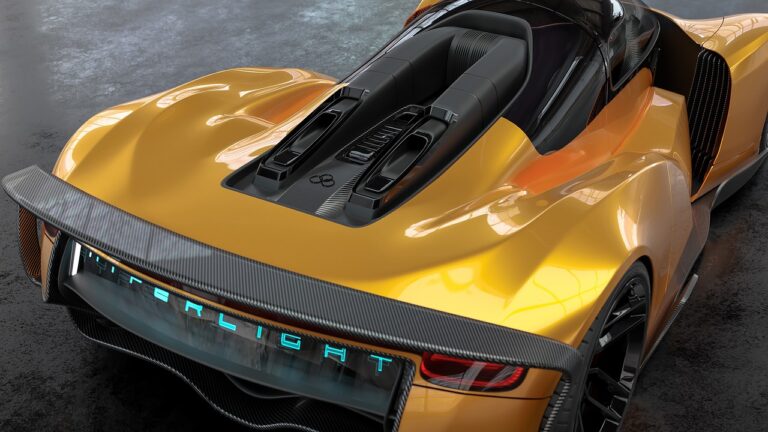Analyzing the Role of Ecodesign in Reducing Environmental Impact of Auto Products: Bet bhai.com, Cricket99 bet login, Diamondexch9.com
bet bhai.com, cricket99 bet login, diamondexch9.com: Analyzing the Role of Ecodesign in Reducing Environmental Impact of Auto Products
In today’s world, the impact of human activities on the environment is becoming increasingly evident. From climate change to resource depletion, the way we design and manufacture products has a significant effect on the health of our planet. One industry that has a particularly large environmental footprint is the automotive industry. The production and use of automobiles contribute to air and water pollution, as well as greenhouse gas emissions.
Ecodesign, also known as sustainable design or green design, is a concept that aims to minimize the environmental impact of products throughout their entire lifecycle. When it comes to auto products, ecodesign can play a crucial role in reducing emissions, improving fuel efficiency, and conserving resources. Let’s take a closer look at how ecodesign can make a difference in the automotive industry.
The Lifecycle Approach
One of the key principles of ecodesign is to consider the entire lifecycle of a product, from raw material extraction to disposal. When it comes to auto products, this means looking at every stage of a vehicle’s life, including design, manufacturing, use, and end-of-life management. By taking a holistic approach, manufacturers can identify opportunities to reduce environmental impact at each stage.
For example, in the design phase, ecodesign principles can be used to create vehicles that are more lightweight and fuel-efficient. This can lead to lower emissions during the use phase, as well as reduced resource consumption during manufacturing. By using recyclable materials and designing for disassembly, manufacturers can also make it easier to recycle and reuse components at the end of a vehicle’s life.
Reducing Emissions
One of the most significant ways that ecodesign can benefit the environment is by reducing emissions from auto products. Vehicles are a major source of greenhouse gas emissions, which contribute to climate change and air pollution. By designing cars and trucks that are more fuel-efficient, manufacturers can help reduce the carbon footprint of their products.
Ecodesign strategies for reducing emissions include improving aerodynamics, using lightweight materials, and optimizing engine performance. By making vehicles more energy-efficient, manufacturers can lower the amount of fuel needed to operate a vehicle, resulting in lower emissions of greenhouse gases like carbon dioxide and methane.
Improving Fuel Efficiency
In addition to reducing emissions, ecodesign can also help improve fuel efficiency in auto products. This is important not only for reducing greenhouse gas emissions but also for conserving limited resources like oil and gas. By designing vehicles that use less fuel, manufacturers can help reduce our dependence on fossil fuels and lower the environmental impact of transportation.
Ecodesign strategies for improving fuel efficiency include using hybrid and electric powertrains, developing more efficient engines, and incorporating regenerative braking systems. By combining these technologies with advanced materials and aerodynamics, manufacturers can create vehicles that are much more fuel-efficient than traditional models.
Conserving Resources
Another key benefit of ecodesign in the automotive industry is the conservation of resources. Vehicles require a significant amount of raw materials like steel, aluminum, and plastic to manufacture. By using sustainable materials and designing products for durability and longevity, manufacturers can help reduce the environmental impact of resource extraction and depletion.
Ecodesign strategies for conserving resources include using recycled materials, designing for durability, and implementing closed-loop manufacturing processes. By reusing materials and reducing waste, manufacturers can minimize the environmental impact of their products and contribute to a more sustainable future.
FAQs
Q: What are some examples of ecodesign in the automotive industry?
A: Some examples of ecodesign in the automotive industry include using lightweight materials like carbon fiber, developing hybrid and electric vehicles, and designing vehicles for recyclability and disassembly.
Q: How can consumers support ecodesign in the automotive industry?
A: Consumers can support ecodesign in the automotive industry by choosing fuel-efficient vehicles, maintaining their vehicles properly, and recycling or disposing of old vehicles responsibly.
Q: What are the environmental benefits of ecodesign in the automotive industry?
A: The environmental benefits of ecodesign in the automotive industry include reduced emissions of greenhouse gases, improved fuel efficiency, and conservation of resources like oil and gas.
Q: Are there regulations in place to promote ecodesign in the automotive industry?
A: Yes, there are regulations in place in many countries to promote ecodesign in the automotive industry, such as vehicle emissions standards and fuel efficiency requirements.
In conclusion, ecodesign plays a crucial role in reducing the environmental impact of auto products. By considering the entire lifecycle of vehicles, reducing emissions, improving fuel efficiency, and conserving resources, manufacturers can create more sustainable products that benefit both the planet and future generations. As consumers, we can also support ecodesign by making environmentally conscious choices and advocating for more sustainable practices in the automotive industry. Let’s work together to drive towards a greener future.







